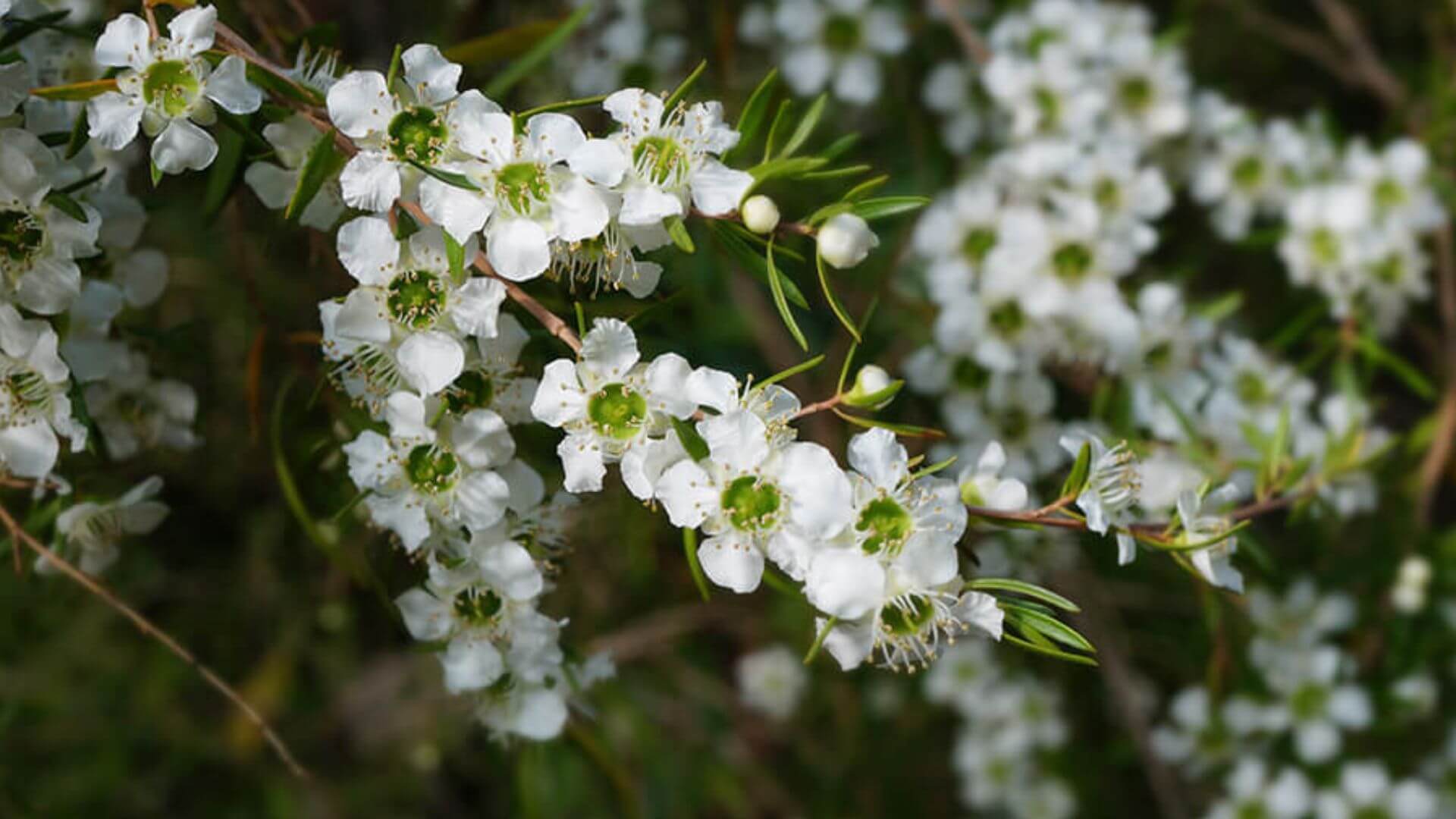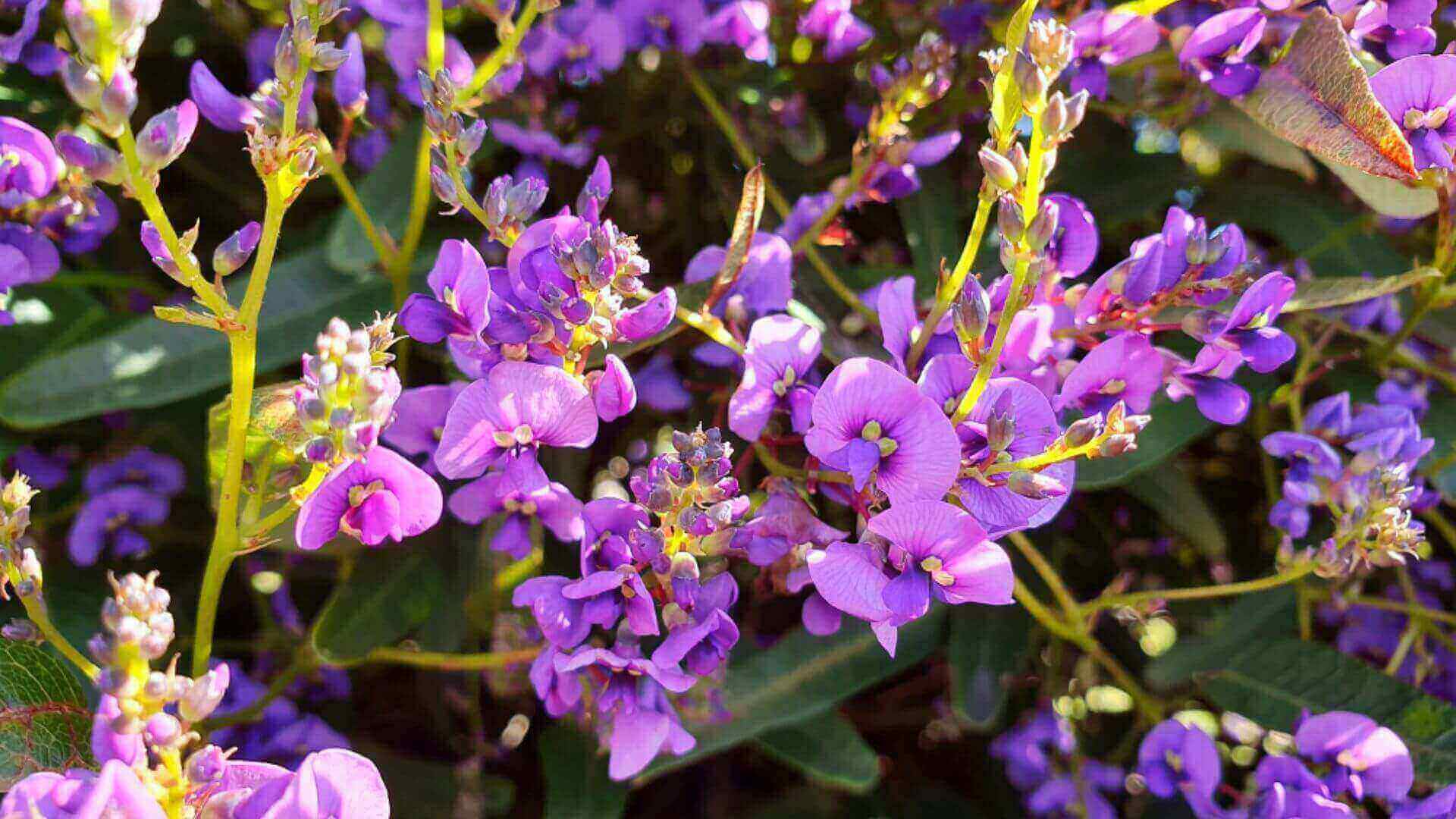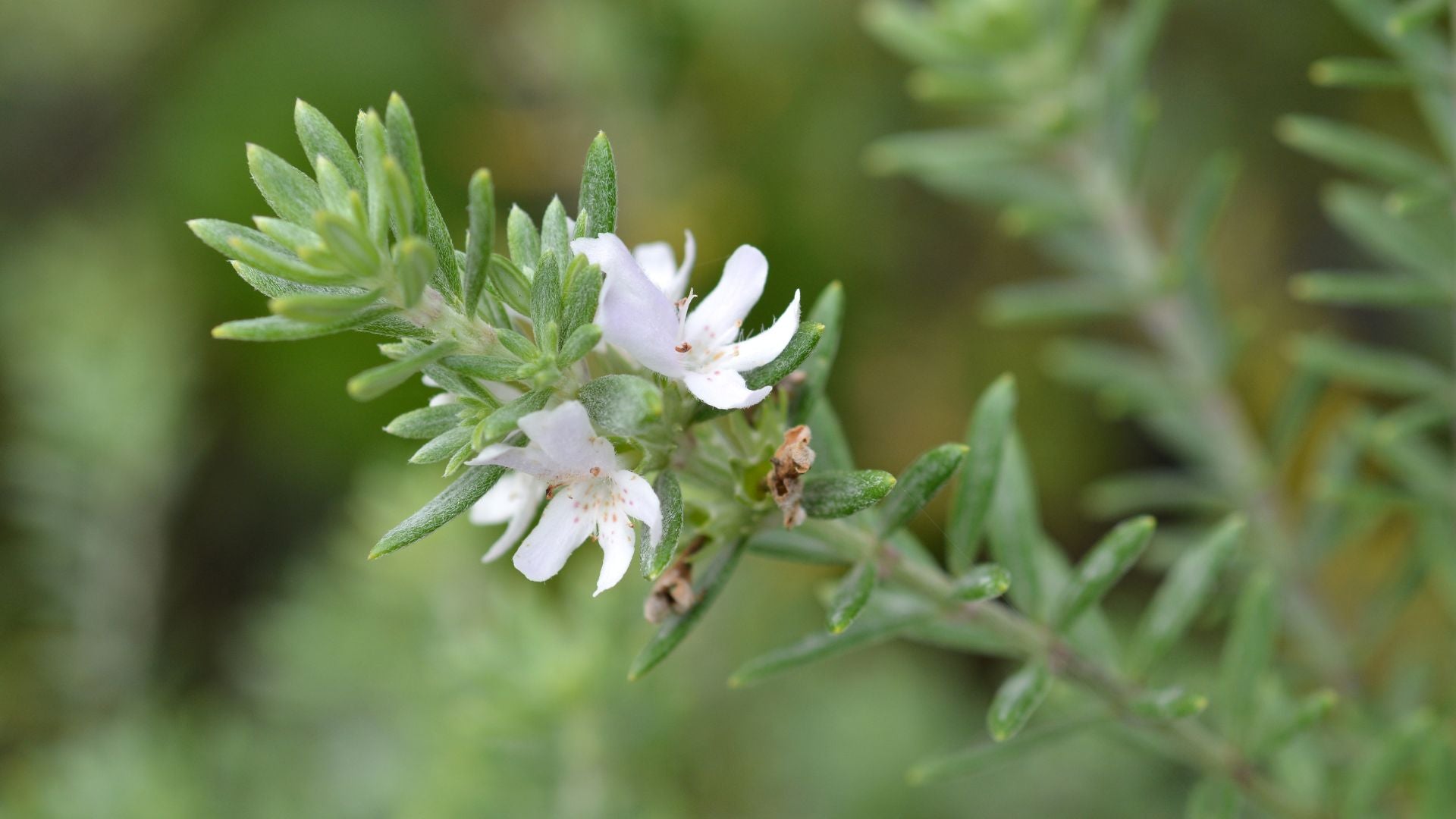5 of the Best Australian Native Plants for a Bee-Friendly Garden
Want to Create a Buzzing, Bee-Friendly Garden?
Bees are essential pollinators, helping plants thrive and ensuring a healthy ecosystem. But with bee populations declining, we need to do our part to support them.
By avoiding pesticides and planting nectar-rich native flowers, you can create a haven for both honeybees and native Australian bees - right in your own backyard!
1. Jelly Bush (Leptospermum spp.)

The Jelly Bush, also known as Honey Bush, is a hardy native shrub that thrives in tough conditions and attracts both honeybees and native bees with its abundant nectar.
- Growth & Care: Sun-loving and drought-resistant, Jelly Bush thrives in well-drained soil and can grow up to 3 metres tall.
- Flowering Season: In spring, it bursts into tiny white flowers, attracting not only bees but also butterflies and other pollinators.
- Best Use: Ideal as a hedge, screening plant, or feature shrub in a low-maintenance, bee-friendly garden.
Did you know? Jelly Bush honey is highly sought after for its antibacterial properties, similar to Manuka honey!
2. Gorse Bitter Pea (Daviesia ulicifolia)

Looking for a hardy, low-maintenance plant that supports both bees and soil health? The Gorse Bitter Pea is a standout choice!
- Why Bees Love It: Its pollen-rich blooms attract honeybees, native bees, butterflies, and other pollinators.
- Eco-Friendly Bonus: As a nitrogen-fixing plant, it naturally improves soil quality -great for regenerative gardening!
- Growth & Care: Gorse Bitter Pea thrives in poor, well-drained soils and requires little water once established.
If you want a bee-friendly garden that’s both low-maintenance and environmentally beneficial, this resilient plant is a perfect addition!
3. Grevillea – A Bee & Bird Magnet

One of Australia's most iconic native plants, Grevillea is a must-have for any bee-friendly garden.
- A Favourite for Bees & Birds: The abundant nectar makes Grevillea a top choice for pollinators, helping sustain both native bees and honeybees.
- Indigenous Significance: Indigenous Australians have long valued Grevillea for its sweet nectar, which was traditionally sipped directly from the flowers or mixed with water for a refreshing drink.
- Hardy & Low Maintenance: Grevillea thrives in poor soils, is drought-tolerant, and requires minimal care, making it ideal for Australian gardens.
If you’re looking for a stunning, low-maintenance plant that provides a year-round food source for pollinators, the Grevillea is an excellent choice!
4. Hardenbergia (Happy Wanderer) – A Beautiful Climbing Vine for Bees

For a fast-growing, low-maintenance climber that adds a pop of colour while supporting local pollinators, Hardenbergia violacea, commonly known as Happy Wanderer, is a perfect choice.
- Bee-Friendly Blooms: The vibrant purple flowers attract native Australian bees, honeybees, and butterflies.
- Versatile & Easy to Grow: Whether from seeds or cuttings, Hardenbergia is non-invasive and grows well as a climbing vine, ground cover, or informal screen.
- Thrives in Tough Conditions: It’s drought-tolerant, frost-resistant, and grows in a variety of soil types, making it a great low-maintenance option.
5. Westringia (Coastal Rosemary) – A Hardy, Bee-Loving Native

For a tough yet beautiful shrub that thrives in Australian conditions while supporting pollinators, Westringia fruticosa, commonly known as Coastal Rosemary, is a fantastic choice.
This low-maintenance native produces delicate white to lavender flowers year-round, making it a reliable nectar source for bees and other beneficial insects.
- Bee-Approved Blooms: Loved by honeybees and native bees, its nectar-rich flowers help support pollinators in all seasons.
- Resilient & Drought-Tolerant: Found along Australia’s East Coast, Westringia is highly drought-resistant, salt-tolerant, and thrives in coastal gardens.
- Low-Maintenance & Versatile: It can be shaped into a hedge, topiary, or left to grow naturally, making it a great choice for a variety of landscapes.
Sustainable Beekeeping & Natural Products

Creating a bee-friendly garden doesn’t just support these vital pollinators - it also helps build a healthier, more sustainable ecosystem.
By planting Australian native species, you’re providing a reliable food source for bees while enjoying a vibrant, low-maintenance garden filled with natural beauty. Even small changes, like avoiding pesticides and planting nectar-rich flowers, can make a big difference for local bee populations.
At Collombatti Naturals, we continue to support sustainable beekeeping by sourcing pure beeswax and cold-pressed local honey from trusted Australian beekeepers. Whether it’s in our natural beeswax products or the golden honey we offer, we remain committed to using and promoting the incredible gifts that bees provide.
Want to learn more? Check out this article by Australian Plants Online on “Bee-Friendly Gardening” for more tips on creating a pollinator-friendly space in your backyard!








